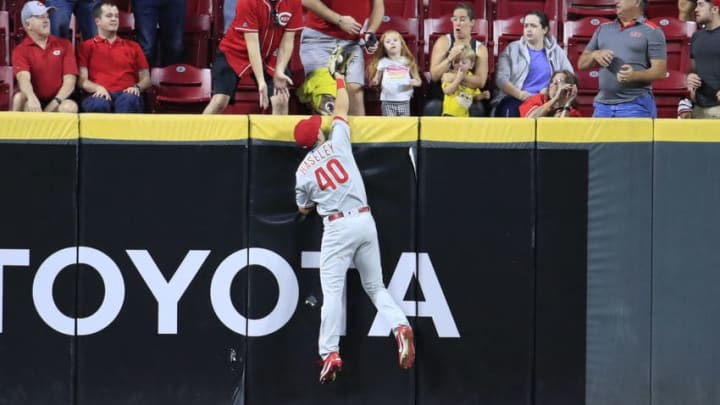
The De Facto Starters October 1, 2019
Pitcher Aaron Nola: B+. Even in what was clearly an off-year for Nola, he was able to compile a record most starters in MLB would be perfectly happy with, but very quietly – 12-7/3.87 ERA/1.265 WHIP. However, on the heels of the right-hander’s sterling 2018, when he finished 3rd in the NL Cy Young vote, this past summer’s campaign had to be a disappointment for him. Basically, he struggled with pitch location in a most un-Nola-like way, or to be more precise, he had too many days when he couldn’t locate his fastball while the curve was just fine or vice versa. There seems no reason not to expect him to carve about 0.100 off his ’19 WHIP next season, bringing it back in line with his lifetime figure. It would not be a stretch to see him return to his ’18 figure there – 0.975 – assuming he hits an extended groove. Entering his age-27 season, Nola will have won better than three in every five decisions for his career.
Catcher J.T. Realmuto: A. Realmuto posted the best WAR (4.4) in the starting lineup for the Philadelphia Phillies, according to Baseball-Reference, with a slightly different starting list than given here. Bryce Harper was second (0.2 behind). In his first season with Philly, the nominal best catcher in baseball established himself as the best off-season signing by the team. He threw out an MLB-best 46.7 percent of base-runners attempting to steal on him, which also involved throwing out 16 more runners than the next best catcher in either league. At the plate, he slashed .275/.328/.493. He should win the NL Gold Glove.
